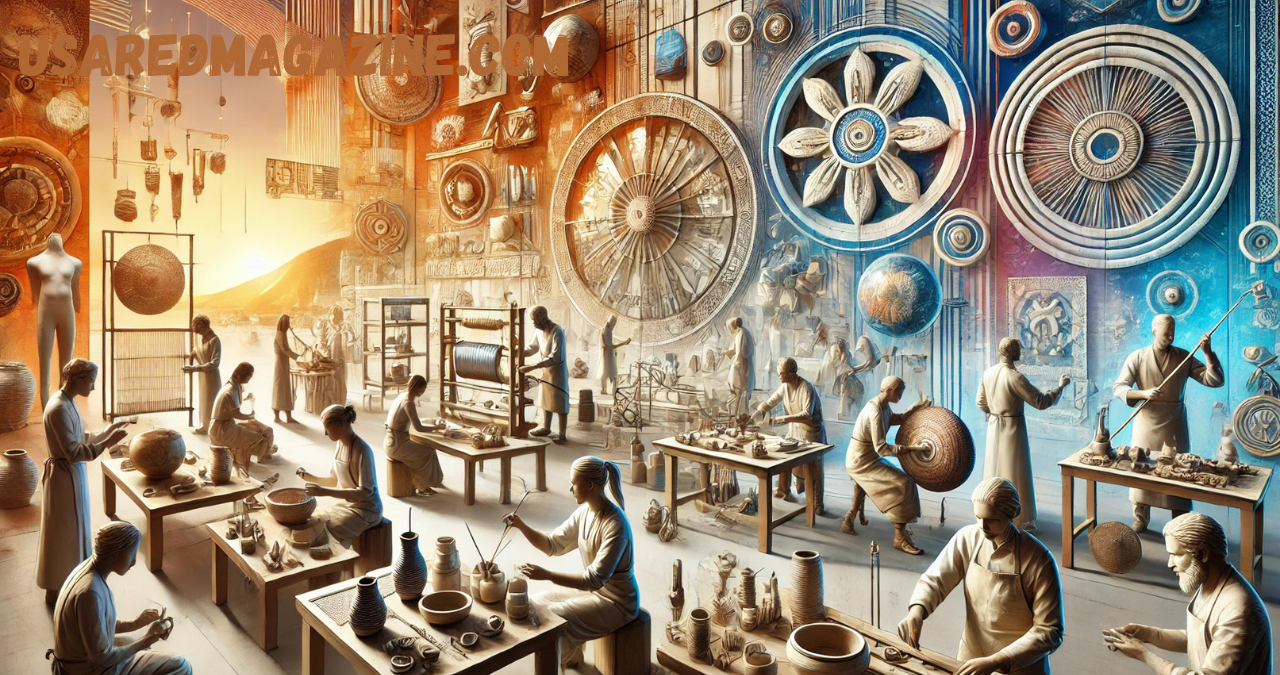In a world dominated by ever-evolving technology and modern aesthetics, a profound reconnection exists with the roots of creativity Ancient Artz of ancient art forms. “Ancient Artz Revived” is not just a nostalgic look back but a vibrant, living tradition that modern artists and artisans breathe new life into, blending timeless techniques with contemporary expressions. This in-depth exploration reveals how these age-old crafts are preserved and thriving in today’s art scene.
The Renaissance of Ancient Artz in Modern Times
At the heart of this revival is a collective yearning for connection—to our history, the tactile, and the profoundly human act of creation that these ancient practices embody. From the intricate brush strokes of classical Chinese painting to the robust sculptures of ancient Greece, contemporary creators find new ways to honor these legacies while making statements that resonate with today’s audiences.
Rediscovery and Innovation
In cities around the globe, from New York to Tokyo, artisans are not merely replicating ancient artifacts but are reinterpreting them, infusing modern themes and personal narratives. This resurgence is evident in various sectors, including fine arts, crafts, and design, where the ancient techniques of weaving, pottery, metalwork, and mural painting are being re-explored.
Pottery and Ceramics
Take, for instance, the ancient art of pottery. Today’s ceramicists are turning to millennia-old methods like coil and pinch pottery, often found in the ruins of the earliest civilizations. These methods are celebrated for their directness in handling clay, allowing the artist to leave a personal imprint literally at their fingertips. Modern ceramicists use these techniques to produce works that speak to both the past and the present, often incorporating recycled materials and eco-friendly practices that resonate with contemporary concerns about sustainability.
Textile Arts
Similarly, the textile arts have seen a renaissance, with modern weavers using ancient looms to explore complex patterns that were once common in places like ancient Peru and Egypt. Using natural dyes and fibers, contemporary textile artists connect with ancestral techniques and modern eco-conscious audiences.
Technological Integration
Integrating technology with ancient art forms has opened up new avenues for innovation. Digital tools and techniques such as 3D printing and virtual reality have been employed to recreate ancient artifacts and architectural wonders in stunning detail. These technologies not only help in preservation efforts but also enable artists to experiment with ancient designs in ways that were previously unimaginable.
Cultural Significance and Global Impact
The revival of ancient arts goes beyond mere aesthetic appreciation; it carries significant cultural and educational value. It serves as a bridge between generations and geographies, offering insight into the lives and values of ancient civilizations while providing a mirror to contemporary cultural dynamics.
Educational Outreach
Institutions and educators are leveraging the revival of these art forms to engage students and the public in cultural heritage. Workshops, exhibitions, and interactive museum displays focusing on ancient techniques provide hands-on learning experiences and help foster a deeper appreciation of human history and diversity.
Global Collaborations
The global aspect of this revival is particularly notable. Artists and artisans often collaborate across borders, sharing techniques and ideas, which leads to a rich cross-pollination of styles and innovations. These collaborations are usually showcased in international exhibitions, festivals, and conferences, highlighting ancient arts’ universal appeal and relevance in the modern world.
Challenges and Future Prospects
Despite the enthusiasm surrounding these ancient practices, there are significant challenges. The scarcity of materials, the need for specialized skills, and the commercial pressures of the modern art market threaten the sustainability of these revived art forms. However, these arts survive and thrive with increasing support from governments, cultural organizations, and the public.
Supportive Measures
Grants, scholarships, and fellowships are increasingly available for artists specializing in these practices. Moreover, digital marketplaces and social media platforms offer new venues for artisans to share and sell their work, reaching wider audiences than ever before.
Conclusion
The revival of ancient artz is a testament to the enduring human spirit to create and communicate across time. It enriches our contemporary culture and ensures that our ancestors’ wisdom and beauty are preserved and adapted in dynamic new ways. As we move forward, the blend of ancient skills and modern innovations will continue to inspire and challenge us, proving that art, in any form, is a vital part of human progress.
FAQs About Ancient Artz Revived
- What are some famous ancient art forms being revived today?
- Popular ancient art forms experiencing revival include pottery, textile weaving, metalwork, fresco painting, and traditional woodworking.
- How are modern artists incorporating ancient techniques into their work?
- Modern artists incorporate ancient techniques by blending traditional methods with contemporary themes, materials, and technology, creating a dialogue between the past and present.
- What role does technology play in the revival of ancient arts?
- Technology plays a crucial role in the revival of ancient arts through digital visualization, 3D printing, and enhanced replication techniques, helping to preserve and innovate traditional methods.
- How can one get involved in learning ancient art techniques?
- One can learn ancient art techniques through workshops, classes at arts institutions, online tutorials, and cultural festivals focused on traditional arts.
- What are the main challenges facing the revival of ancient arts?
- The main challenges include the scarcity of conventional materials, the need for specific artisan skills, economic sustainability, and adapting ancient techniques to appeal to modern tastes and markets.
You May Also Read: https://usaredmagazine.com/brahflix/
